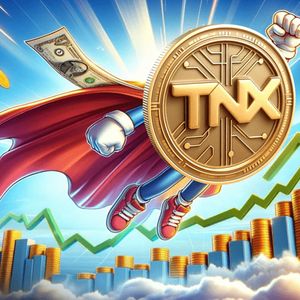Summary Despite high fees, GBTC holders may still see capital appreciation due to Bitcoin's fundamental setup. From a seasonality standpoint, July is typically a phenomenal month for GBTC returns. Second only to October during the typical year. Investment capital flow for Bitcoin flipped back to positive in the last week of June, and stablecoin trends may foreshadow a BTC bid. There are serious risks, however. BTC's NVT valuation is astronomical and daily active addresses have been falling rapidly. When I last covered the Grayscale Bitcoin Trust ETF ( GBTC ) for Seeking Alpha, I downgraded the fund and cited the ETF's uncompetitive fees relative to similar products in the United States. In the time since the publication of that article, we've seen further fee flight from GBTC culminate in the fund losing the top spot among US-based Bitcoin ETFs measured by BTC AUM: BTC ETF AUM (The Block) It only took about 6 months for BlackRock's iShares Bitcoin Trust ETF ( IBIT ) to dethrone GBTC for largest spot BTC ETF, with over 31k more BTC than Grayscale's offering. Prior to the approval of spot ETFs in the United States, GBTC had over 619k BTC under management. That figure has since collapsed down to about 307k BTC - or roughly 55%. I won't belabor the point here. There are more cost-effective ways to get exposure to Bitcoin than Grayscale's flagship product. Grayscale still charges 1.5% and the market has determined that to be too expensive. Despite its high fees, in this article, we'll explore whether GBTC holders will enjoy capital appreciation anyway due to Bitcoin's fundamental setup. We'll look at network activity, capital flow, Bitcoin seasonality, and valuation. Network Activity One of the primary metrics that I've focused on regarding the health of Bitcoin's network is daily active addresses. Investors can think of this the way they might think of DAUs for an application. Though it should be noted that as a permissionless system, there can be no assurances that active addresses are synonymous with unique users. That said, the trend in daily active addresses for Bitcoin has significantly deteriorated since the launch of spot ETFs in the United States. Daily Active Addresses (30 day avg) (CoinMetrics) At roughly 650k average daily active addresses over the last month, Bitcoin is currently at main chain user levels not seen since the first half of 2019. This is somewhat unique to Bitcoin compared to other high value blockchain networks. In the chart above, I've added the same metric for Litecoin ( LTC-USD ). This multi-year trend is generally positive, with Litecoin's daily active address figures roughly 7-8x higher than early 2019 comparisons. One might posit that Bitcoin's users are simply migrating to scaling networks like Lightning rather than main chain usage. From what I'm observing, this is not the case: Lightning Network Data (mempool.space) It's certainly true that BTC-denominated Lightning Network capacity is trending back up near highs from 2023. However, the number of "channels" continues to track lower. This is important because declining channels are indicative of a network that is losing utility rather than gaining it. But the argument can certainly be made that Bitcoin flipped from a digital money system to a capital preservation system. Holding that view, assessing investment capital flow is potentially equally if not more important. Seasonality and Capital Flows The last week of June was the third consecutive week of negative net flow from crypto investment products, according to data from CoinShares. The good news for crypto bulls is the aggregate weekly net flow was down just $30 million. This would seem to imply a slowing of sell pressure on digital assets after what was previously back to back weeks with at least $500 million in negative net flow. Net Flow By Asset (CoinShares/James Butterfill) Breaking the data down by asset, Bitcoin's weekly net flow was actually positive. Multi-asset products experienced positive net flow as well. In fact, if one excludes the $60.7 million outflow from Ethereum ( ETH-USD ), it would have been a positive week for the digital asset space. Of course, none of this data is forward looking. According to data from TrendSpider, July is a seasonally strong month for Bitcoin and Bitcoin proxies. GBTC Returns by Month (Trendspider) July has actually been the second best month for GBTC after only October going back the last five years. Four of the five preceding Julys have resulted in a positive return for GBTC shareholders. The same is true for January and March, but at a 15.3% mean, July's average return is stronger than each of those months. Taking these together factors, we're heading into a four-month period where GBTC investors have typically enjoyed two of their best months of positive returns during a given year. Something else to consider is exchange flows for stablecoins. June was the 8th consecutive month of net outflows from exchanges for stablecoins. During July, August, and October last year, stablecoin exchange net flow was positive in each of those three months. Meaning stables were flowing back to exchanges for off-chain activity: Stablecoin Exchange Flows (IntoTheBlock) I see this data as generally counterintuitive relative to things like ETF products for the more broad crypto bull. In this instance, stablecoin outflow from exchanges may actually be a very good thing for on-chain DeFi activity and altcoin swaps because it indicates asset usage rather than redemption. However, positive stablecoin net flow back to exchanges aligns with a seasonal bid for Bitcoin quite well. The theory here is that stablecoin capital flows back to exchanges, where it is used to purchase BTC in anticipation of better returns from BTC capital appreciation than from returns one would expect via on-chain DeFi protocols. Valuation Multiples As sympathetic as I am to the limited supply, possible store of value concept in a debt-based fiat monetary system, I am highly concerned about Bitcoin's collapsing usage and valuation multiple expansion. As I've pointed out via my SA articles many times, there are no real industry standards for valuing native digital assets of public blockchain networks, and BTC is no exception. For smart contract networks like Ethereum or Solana ( SOL-USD ), I think the price to fees ratio makes some sense. In the case of Bitcoin, it is new coin issuance rather than fees that is mainly driving miner compensation. So I don't think the P/F ratio is as relevant for Bitcoin specifically. However, one valuation multiple that I do like when assessing Bitcoin is the NVT ratio, or network value to transactions ratio. This figure divides the market capitalization of the coin by the USD-denominated volume that is transmitted over the blockchain daily. Again, there is no real rule pertaining to what is expensive and what is cheap. That said, looking at these metrics with 30 day averages and relative peers and prior periods can offer some signals. NVT Ratio (30 day avg) (CoinMetrics) At a 30-day average NVT ratio of 218, Bitcoin is the most overvalued it has been based on this ratio since September 2010. To put that in context, the last time BTC was this overvalued based on 30 day NVT, it was 4 months after "Pizza Day." And compared to a network like Litecoin, the divergence from historical norms is crystal clear. Bitcoin is commanding a 300% premium to the NVT ratio of what is, frankly, a very similar digital asset. Investor Takeaways We're seeing the impact of BTC supply moving to the balance sheets of companies like MicroStrategy ( MSTR ) and to spot ETF products. On one hand, this explains the surge in Bitcoin's NVT ratio and the decline in network usage. There will almost certainly come a time when NVT will have to correct lower. That can either happen from lower BTC prices or from an improvement in value transacted over the network. My preference would be the latter, but I think investors would be wise to acknowledge that the former is just as possible. Despite problems with both usage and multiple expansion, I suspect we will begin to see more capital flow to Bitcoin over the next several months as both seasonality and anti-fiat ethos potentially make BTC an attractive option as a hedge against election uncertainty in the United States and interest rate cuts globally with inflation figures still well ahead of 2%. I think BTC is a buy on weakness, and GBTC holders will be beneficiaries of appreciation in coin prices. That said, I wouldn't personally hold GBTC for a sustained period of time as long as Grayscale continues to charge 1.5%.














